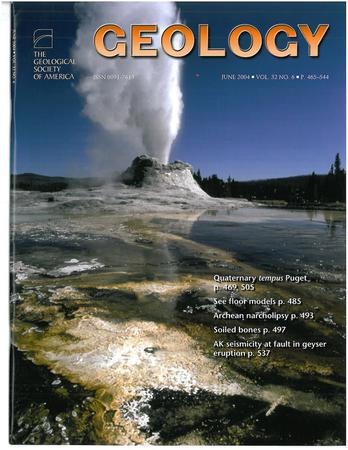Relationships between fluvial dune cross-set thickness, planview width, and trough geometry
IF 4.6
1区 地球科学
Q1 GEOLOGY
引用次数: 0
Abstract
Sedimentary structures provide critical information for the reconstruction of ancient environments of Earth and other planets. Fluvial dune cross sets, structures that record dune migration via the filling of leading troughs along ancient riverbeds, are particularly useful. Most quantitative methods for interpreting cross sets require thickness measurements, but the growth of planview imaging of sedimentary rocks on Earth and Mars has introduced a need for methods to interpret planview exposures of cross sets. Here, we measured 359 cross-set widths exposed along ancient channel belts of the Cretaceous Cedar Mountain Formation exposed in Utah, USA, and compared these widths to published thicknesses (n = 350). We found that the mean cross-set width was 1.29 m, 9.3 times the mean thickness. The normalized distributions of widths and thicknesses were statistically similar and thus contained similar paleoenvironmental information. Numerical experiments representing a series of trough cut-and-fill structures show that cross-set reworking is equally important in setting width as thickness and that the observed cross-set widths could be explained by a gamma-distributed range of trough widths with a mean of 2.96 ± 0.25 m, ∼2.3 times cross-set width. Given the similarity of dune-field geometries across depositional settings and planetary boundary conditions, we suggest this cross-set width-to-thickness relationship could be useful for interpreting other cross sets exposed in planview.河流沙丘交叉集厚度、平面宽度和槽几何之间的关系
沉积构造为重建地球和其他行星的古代环境提供了重要信息。河流沙丘交叉组,记录了沿着古河床的引导槽填充的沙丘迁移的结构,特别有用。大多数解释交叉集的定量方法需要厚度测量,但地球和火星上沉积岩的planview成像的增长已经引入了解释交叉集的planview暴露的方法的需求。在这里,我们测量了美国犹他州白垩纪雪松山组古水道带的359个交叉集宽度,并将这些宽度与已公布的厚度(n = 350)进行了比较。我们发现平均交叉集宽度为1.29 m,是平均厚度的9.3倍。宽度和厚度的归一化分布在统计上相似,因此包含了相似的古环境信息。代表一系列槽切填结构的数值实验表明,交叉集重加工在设置宽度和厚度方面同样重要,观察到的交叉集宽度可以用槽宽度的伽玛分布范围来解释,其平均值为2.96±0.25 m,交叉集宽度的~ 2.3倍。考虑到不同沉积背景和行星边界条件下沙丘场几何形状的相似性,我们认为这种交叉集宽度-厚度关系可能有助于解释planview中暴露的其他交叉集。
本文章由计算机程序翻译,如有差异,请以英文原文为准。
求助全文
约1分钟内获得全文
求助全文
来源期刊

Geology
地学-地质学
CiteScore
10.00
自引率
3.40%
发文量
228
审稿时长
6.2 months
期刊介绍:
Published since 1973, Geology features rapid publication of about 23 refereed short (four-page) papers each month. Articles cover all earth-science disciplines and include new investigations and provocative topics. Professional geologists and university-level students in the earth sciences use this widely read journal to keep up with scientific research trends. The online forum section facilitates author-reader dialog. Includes color and occasional large-format illustrations on oversized loose inserts.
 求助内容:
求助内容: 应助结果提醒方式:
应助结果提醒方式:


